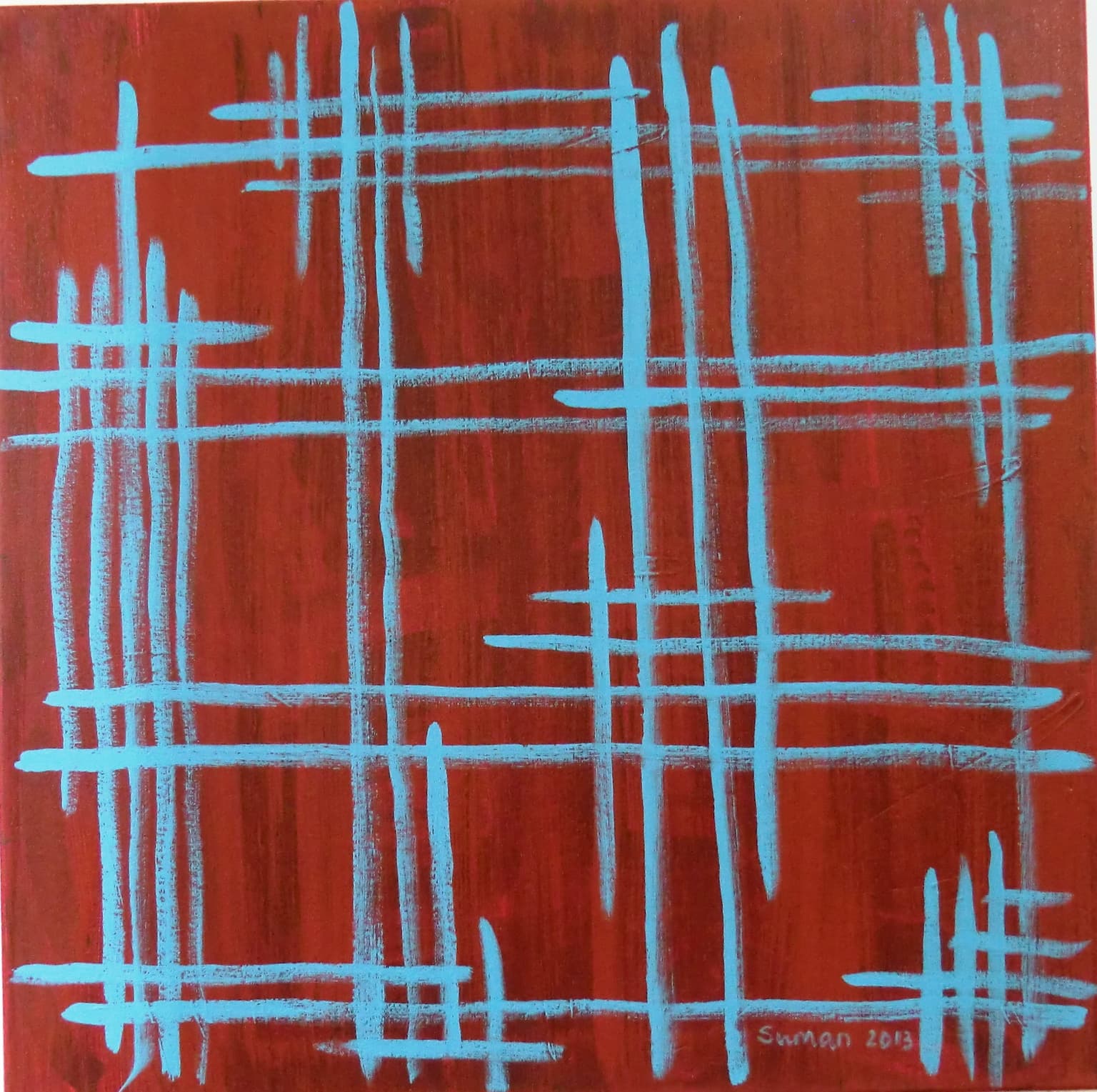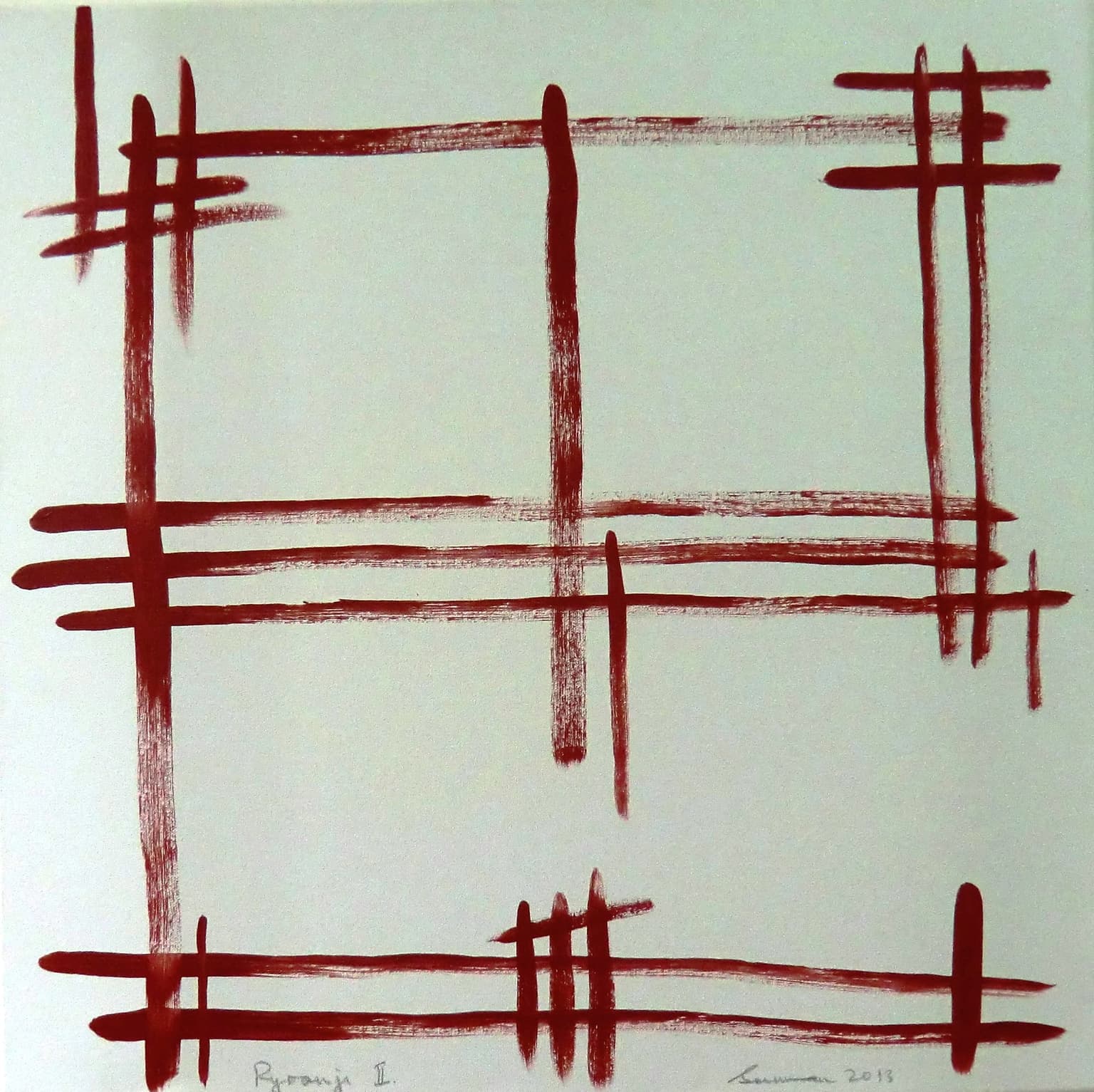Suman Vaze
Artists
Suman Vaze
Artist, Maths teacher
King George V School
Hong Kong
Statement
I seek to depict interesting mathematical truths, curiosities and puzzles in simple, visually descriptive ways. Mathematical amusements inspire the color and form in my paintings, and I try to strike a balance between the simplicity of the concepts and their depiction in art. The logic and balance of the discipline is beautiful, and I like art that both stills and stimulates the mind – these are the qualities I strive to capture in my work.
Artworks

Ryoanji III
24" x 24"
acrylic on canvas
2013
Magic squares are an ancient form of Mathematical puzzle. In 1693 Frenicle published 880 arrangements of the 4x4 magic square. This work is inspired by the one considered to be the most balanced since the numbers along the verticals, horizontals, diagonals and part-diagonals all sum to 34. Hence, if you repeat the square in all directions and mark off any 4x4 square it will be magic. Any 2x2 square within it also sums to 34. Hence the four corners and pairs of opposites all have a sum of 34.

Ryoanji II (Views of Sanchi)
24" x 24"
acrylic on canvas
2013
This work is based on the 3x3 magic square. The consecutive numbers one through 9 can only be placed in one way to create this magic square. In this work I have used intersections of strokes for the numbers and constructed the work by creating the strokes so that the numbers appeared in order from one to nine. Hence the first set of strokes was the top horizontal followed by the middle vertical to make one. Next, the two bottom horizontals and the short vertical in the bottom right to make two and so on.

This work is a meditation on balance and symmetry. I wanted to create a work that had an inherent balance and used the 3x3 magic square as the underlying scaffold. I used the intersections of slow deliberate brush strokes to represent the numbers in the magic square. Hence, the top middle of the work which has one intersection is one while five is in the middle set of intersections. This work is an homage to the rock gardens at Ryoanji in Kyoto which have an austere sense of aesthetic balance.